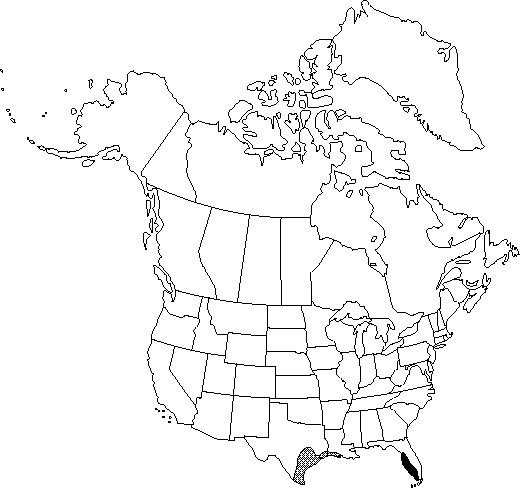Nymphaea elegans
Bot. Mag., plate 4604. 1851.
Rhizomes unbranched, erect, ovoid; stolons absent. Leaves: petiole glabrous. Leaf blade abaxially purple, adaxially green, ovate to nearly orbiculate, 8-20(-30) × 7-16(-25) cm, margins entire to sinuate; venation radiate and prominent centrally, without weblike pattern, compressed upon drying, principal veins 9-17; surfaces glabrous. Flowers emersed, 6-13 cm diam., opening and closing diurnally, only sepals and outermost petals in distinct whorls of 4; sepals green, abaxially flecked with short dark lines, faintly to obscurely veined, lines of insertion on receptacle not prominent; petals 8-27, pale violet to nearly white; stamens 55-145, yellow, connective appendage projecting to 1 mm, rarely more, beyond anther; filaments mostly widest above middle, shorter than anthers; pistil 12-20(-25)-locular, appendages at margin of stigmatic disk triangular, 1 mm or less. Seeds nearly globose, ca. 1.1-1.6 × 0.9-1.3 mm, 1.1-1.3 times as long as broad, with short appressed papillae absent or to 30 µm.
Phenology: Flowering spring–fall.
Habitat: Freshwater ponds, lakes, sloughs, pools in swamps and marshes, ditches, and canals
Elevation: 0-150 m
Distribution

Fla., La., Tex., ne, w Mexico, West Indies (Bahamas).